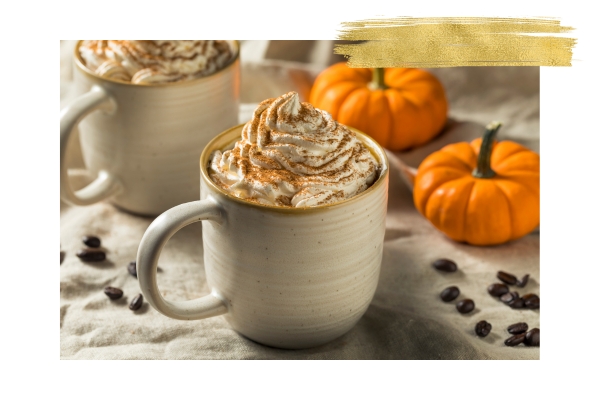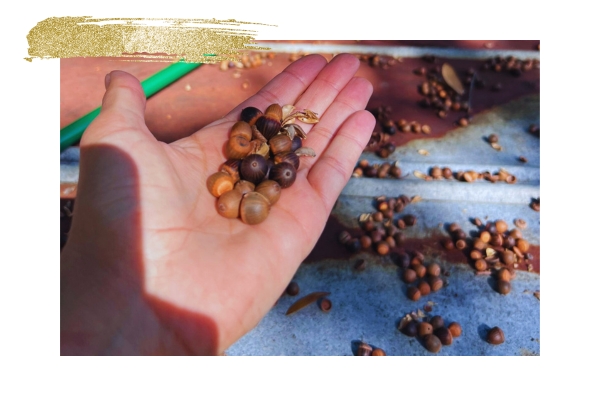
October is here, and I don’t know about you, but something about the falling leaves, the smell of damp earth, and the promise of pumpkin-spiced everything makes me feel like magic is in the air. While most people are busy picking out costumes and stocking up on sweets, my mind tends to wander back—way back—to the ancient roots of Halloween. Spoiler alert: it’s not all about sweets and costumes. Nope, the origins of Halloween are steeped in Samhain, a Pagan festival that’s as old as your grandma’s favourite ghost stories.
So, if you’ve ever wondered how Samhain morphed into the Halloween we know today (or you just want to sound like the most enlightened guest at your next spooky-themed party), let’s dive into the fascinating connection between these two celebrations.
What Even Is Samhain?
Before we dive into sweets and costumes, let’s get one thing straight: Samhain (pronounced “Sow-in,” because English loves to keep us guessing) is no ordinary celebration. For the ancient Celts, Samhain marked the end of the harvest and the beginning of the long, cold winter. Think of it as their version of “batten down the hatches.” The Celts were pragmatic like that.
But Samhain was more than just a practical end to the farming year. It was believed to be a time when the veil between the living and the dead was at its thinnest. Spirits of the deceased could wander the earth, and, in true Celtic fashion, this wasn’t seen as entirely terrifying. Sure, there were some pesky ghosts you’d want to avoid, but it was also a time to honour your ancestors—kind of like sending a cosmic text message to the beyond.
Personally, I’ve always found something oddly comforting in the idea of the thinning veil. There’s just something about autumn evenings that makes the world feel a little more enchanted—and maybe a little more haunted, too.
Dressing Up to Dodge Ghosts (and Look Fabulous)
Ever wondered why we dress up for Halloween? Well, it turns out that during Samhain, the ancient Celts had the same idea. When the dead were believed to walk among the living, people weren’t just throwing on their finest linens for fun. They dressed up to blend in with the spirits, hoping that if they looked spooky enough, any wandering ghost would mistake them for one of their own. Talk about a sneaky survival strategy.
These days, we’ve traded in the ancient garb for outfits like “sexy witch” or “zombie pirate,” but the heart of the tradition remains. Dressing up for Halloween is a nod to the ancient Samhain practice of using costumes to protect ourselves from unwelcome spirits. So, the next time you see someone strutting around in a hilarious or creepy costume, just remember, it’s all part of a time-honoured tradition of dodging ghouls in style.

From Samhain to Halloween: A Bit of a Rebrand
So, how did we go from Samhain’s spiritual feast to today’s pumpkin-palooza? You can thank the Christian Church for that. When Christianity spread across Europe, it had a habit of “Christianising” local traditions (because what’s a bit of spiritual rebranding between friends?). The Church moved All Saints’ Day to November 1st and declared October 31st to be All Hallows’ Eve. It didn’t take long for that mouthful to get shortened to the Halloween we know and love today.
But—and here’s the fun bit—the Church didn’t manage to stamp out all of the Samhain traditions. Instead, they mingled. Things like lighting candles to guide spirits, carving scary faces into turnips (which, let’s be honest, sounds way harder than carving pumpkins), and leaving offerings all found a new home in Halloween celebrations.
For me, it’s a reminder that even in our pumpkin-saturated, party-driven world, Halloween’s connection to Samhain is still alive and well. And let’s face it: pumpkins are way more fun to carve than turnips.
Honouring the Ancestors: Then and Now
One of the most heartfelt traditions of Samhain was the act of honouring ancestors. The Celts believed their loved ones who had passed could pop by for a visit on Samhain night. This was the ultimate family reunion (minus the awkward political debates at dinner), and families would even set a place at the table for their dearly departed.
These days, we might not leave out a plate of food for grandma’s ghost, but Halloween and Samhain still have a way of connecting us to those who’ve passed. The Celts, for instance, left offerings outside villages and fields for fairies and ancestors or called the names of their deceased. It is a colourful, heartfelt celebration of the lives of loved ones who’ve moved on. And I’ll be honest, there’s something really lovely about taking a moment to light a candle or pause in remembrance during this time of year.
For me, Samhain’s tradition of ancestor reverence is a gentle nudge to slow down amidst the Halloween chaos and reflect on life, death, and all the mysteries in between. Plus, it’s a good excuse to sip a cup of hot chocolate and get a little nostalgic.
Samhain Rituals We Still Follow (Even if We Don’t Realise It)
While we might not all be dancing around bonfires or leaving out food for spirits these days, Samhain’s traditions are still very much with us. Take the simple act of lighting candles—something I do every autumn without really thinking about why. Originally, this was done to guide the spirits of the dead back to the otherworld. Now, I like to think of it as lighting a beacon for any positive energies hanging around (and, let’s be real, because candles just make everything cosier).
Even our beloved jack-o’-lanterns, which have become Halloween staples, have their roots in Samhain. The Celts would carve faces into turnips to ward off evil spirits—a tradition that Irish immigrants brought to the U.S., where pumpkins proved to be much easier to carve and way more photogenic.
Halloween: Samhain’s Legacy Lives On
At the heart of it, Halloween is Samhain’s legacy, dressed up in a more commercial, fancy-coated costume. And while Halloween today is all about haunted houses and sugar highs, the spirit of Samhain still lingers. Every time we light a candle, carve a pumpkin, or don a costume, we’re connecting—whether we realise it or not—with an ancient tradition that honours the cycles of life and death, and the mysteries of the unseen.
Personally, I love that this time of year gives me a chance to embrace both the spooky fun of Halloween and the more reflective traditions of Samhain. Whether I’m carving pumpkins, watching a scary film, or just taking a quiet moment to connect with the past, there’s a sense that the veil between worlds is just a little thinner—and that’s pretty magical.
So, as you prepare for Halloween, take a moment to remember its deep roots in Samhain. Whether you’re dressing up as a vampire or quietly lighting a candle, you’re participating in a celebration that’s been going strong for centuries. And isn’t that something to celebrate?



Leave a Reply